Two Views Each of Some Birds in My Yard
These images were taken throughout the summer
The Pyrrhuloxia is a favorite desert bird. It looks like a Cardinal with its crest and red feathers, but is very different. The Pyrrhuloxia (pronounced pie-ruh-lock-seeya) is a bird of the dry Southwest deserts. The Cardinal preferes more diverse habitats.
The male Cardinal is all red with a black face mask. The Pyrrhuloxia is gray with red accents. The Cardinal's beak is conical shaped. The Pyrrhuloxia's bill is parrot-like with a sharp curve in it. TucsonBird Alliance tells us more about this special bird.
Another desert bird in my yard is the Gila Woodpecker. Gila Woodpeckers are large birds that are very vocal, always calling for attention. It found some kind of food, either insect larvae from the tree or some snack from the nearby suet cake.
This Gila has a red cap, letting us know it is a male. With its prize firmly in its bill, it looked around before flying off.
I am very excited to see that a pair of Black-headed Grosbeaks have been spending a few weeks in the neighborhood. They come to my feeders enough so that I see them every few days. They visit the feeder with fatty suet cake.
One of the Black-headed Grosbeaks flew down to a large rock after feeding. I think my birds are immature males that hatched this spring. Their plumage is not dark and bold like an adult's would be- it won't be until next summer that this bird will have its full adult plumage. During the winter months, this bird has an interesting diet, as Birdnote tells us.
Last summer I saw a few glimpses of Hooded Orioles. They nest in the Tucson area under the leaves of fan palms. I learned that a friend one street up from me had a Hooded Oriole in his yard so I put out an "oriole feeder." Oriole feeders look like hummingbird feeders but the portholes are larger to allow the Oriole's large bill to reach inside to get to the nectar. The Hooded Oriole pair have become regular visitors to my feeder! The male is a striking bird! It is called a Hooded Oriole due to the yellow/orange "hood" on its head.
Here is the female Hooded Oriole. I would have liked to have taken some photos of either Oriole on a natural perch but these birds seem to fly to the feeder without perching nearby. Once they finish dining, they fly off into distant trees. I have yet to even see them perched in a nearby tree. Perhaps one day!!
I had a family of Western Screech Owls in the nest box on my back porch this year. As has been the case in past years, once the young owlets fledge, the family moves somewhere in the neighborhood but I never see them again. One recent afternoon I saw a Gila Woodpecker make a strong flight towards my kitchen window. I went outside to see what happened to it and found an Owl that the Woodpecker had been angry at. I went back inside the house and watched the owl through the kitchen window for a minute or so but then the Owl flew off and into a nearby jojoba bush. I waited for a bit, and then went out to look for the owl from a distance. I spotted it on a low branch. When I processed the photo, I saw that a Curve-billed Thrasher was behind the Owl yelling furiously at it!
I returned to the kitchen, not wanting to disturb the owl. It was hard to remain inside though, so five minutes later I went back outside. Crouching low on the porch I could see the Owl perched just a foot off the ground and looking relaxed. The Thrasher was gone and it was quiet under the jojoba bush. I took some photos and went back inside.
Fifteen minutes later I was again tempted to go back outside. By then, the Western Screech Owl had disappeared. I'm glad it stopped by for a short visit and I miss it already.


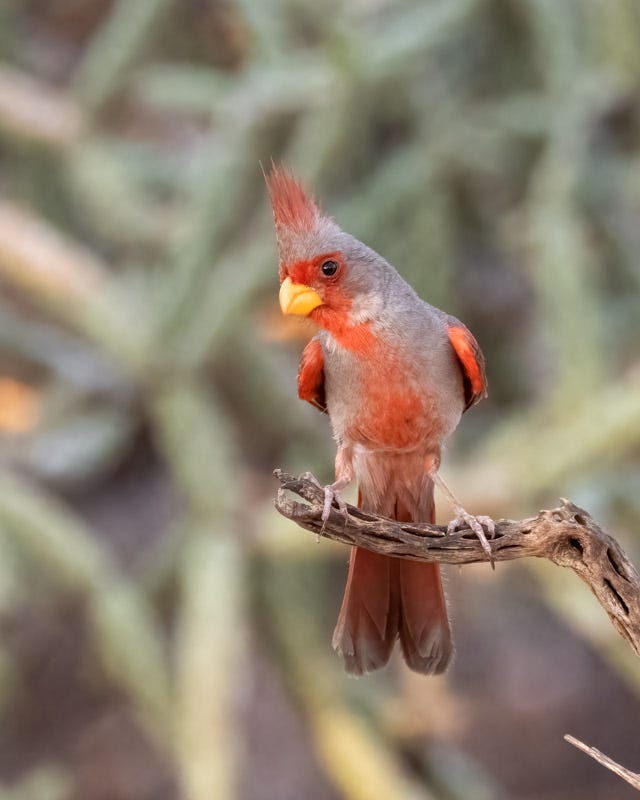
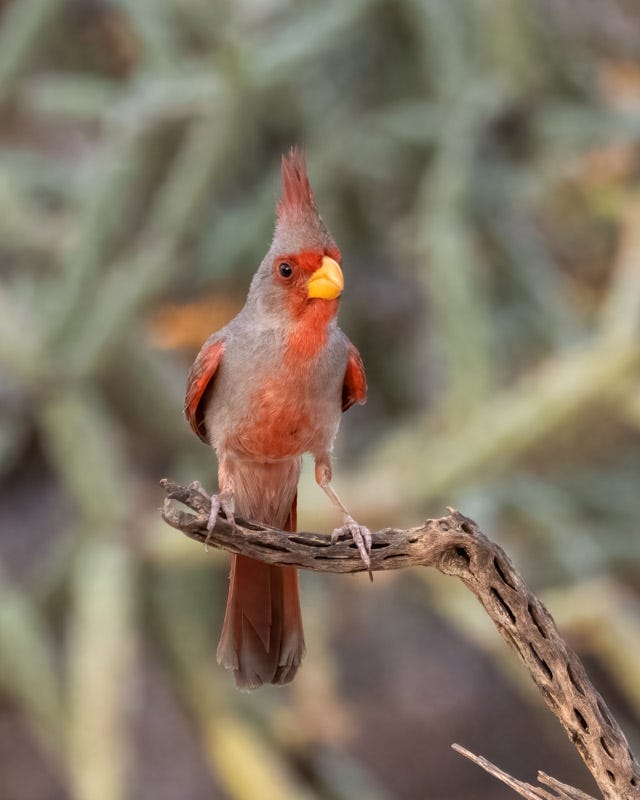
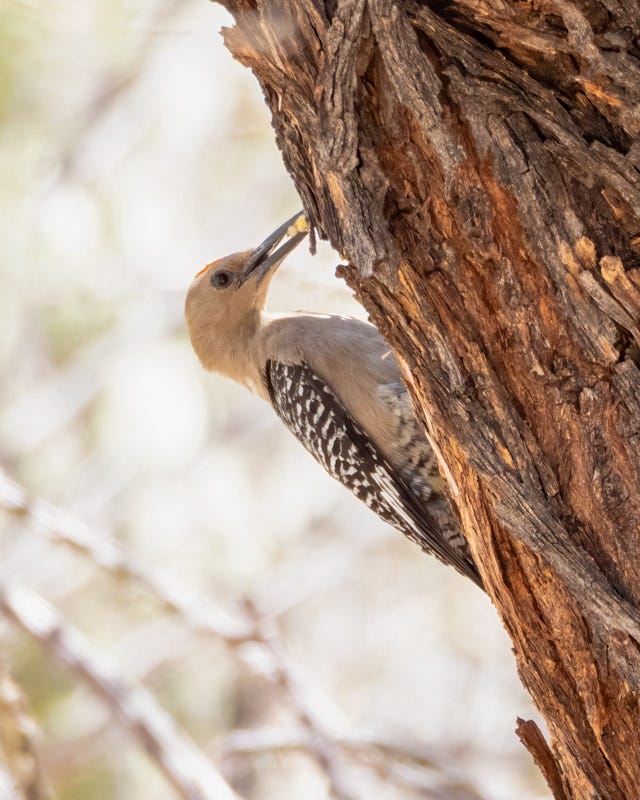
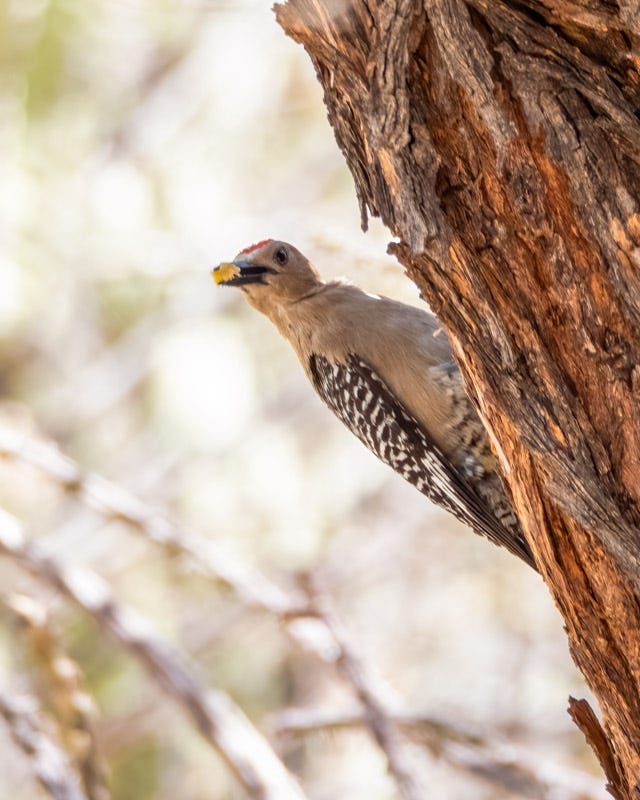
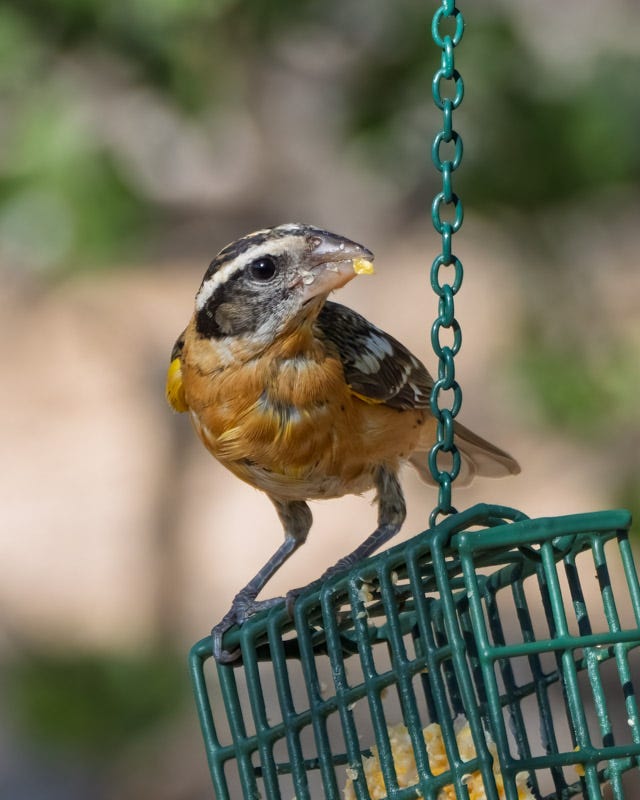
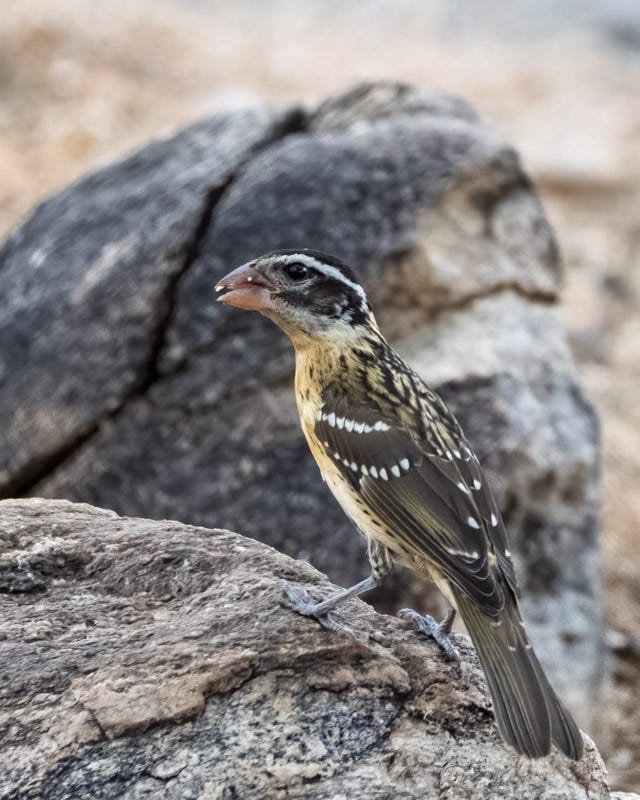

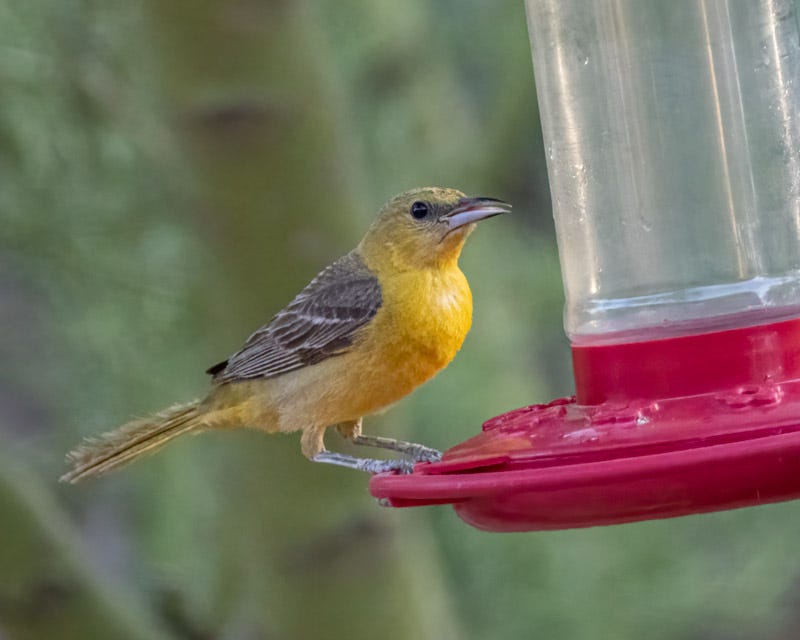
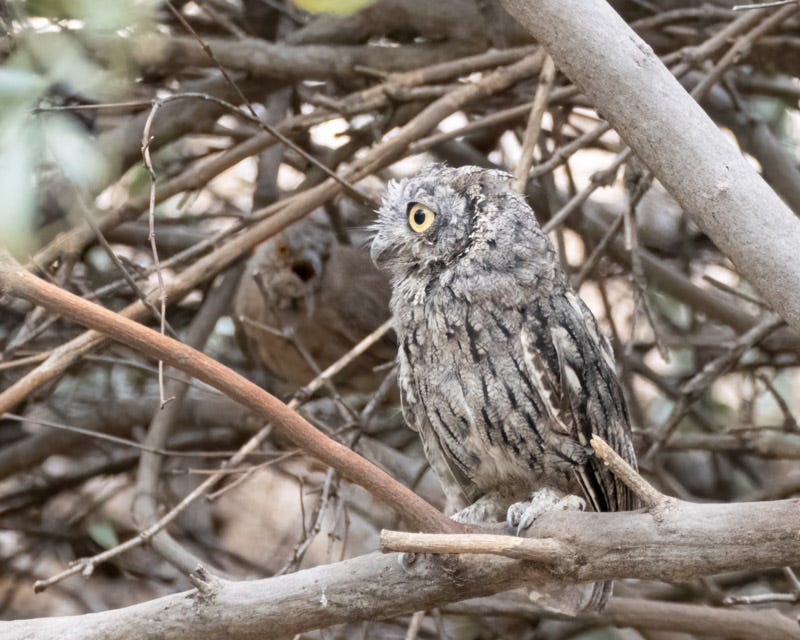
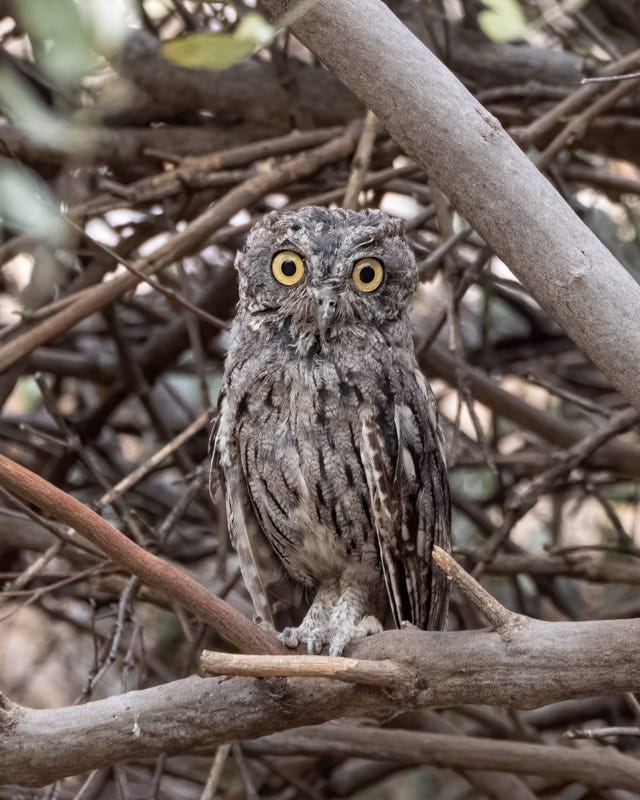
This is great! Great pictures, great theme, great narrative! Congrats!
Great catch with the thrasher yelling at the owl!